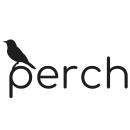Last year, two industries experienced the tremors of the pandemic in drastically different ways: e-commerce and restaurants.
Global restrictions discouraged in-person shopping, resulting in a spike — that has since been sustained — in e-commerce. According to data from the United Nations Conference on Trade and Development, the share of global retail trade for e-commerce grew to 17 percent in 2020, up 3 percent from the year prior.
On the flip side of the same coin, food service experienced an unprecedented downturn. Restaurant industry sales for 2020 were $240 billion below the National Restaurant Association’s estimates, and more than 110,000 eating and drinking establishments closed for business.
So, what could these two industries that have experienced such dramatic differences during the pandemic possibly have in common? For one, each has a plethora of tech companies’ attention in terms of helping them adapt to disruption.
In conversations with two Boston leaders — one at Toast, the popular restaurant management company, and the other from Perch, an e-commerce operator and platform — they shared how they’ve innovated during times of massive change. Both have had undoubted success as a result but, as they explain, they’re far from done.
What’s the coolest project you’ve worked on recently?
Toast Go 2 is a handheld product we launched last year. I have heard again and again from our customers how much they love this device and how it has helped them through the Covid-19 pandemic with curbside pickup or outdoor dining. From a design perspective, we strive for a perfect blend of form and function, elegance and durability. We know how hard our customers have to work to serve their guests and we strive to make hardware that’s their reliable best friend and hope to put a smile on their face when they are using it.
When you are designing a product like this, there are many ways you can go. One of the secrets that makes this product so successful is being deeply rooted in understanding our customers’ needs and what’s important for them. We also stretched ourselves in pushing the boundaries of engineering and technology innovation. Knowing how crazy restaurants can get with soda, beer and soy sauce flying around, we spend a lot of time and energy trying to waterproof the readers. This just speaks to how we want the device to be there to boost the confidence of the server and support our customer’s hospitality dream.
What do you envision for the future of your industry and how is your work helping to shape that future and bring it to life?
This is my sixth year at Toast and we have come a long way on our hardware design. We went from buying five to 10 devices from Amazon at a time to commercial-grade devices from Elo, then stepping into the territory of building our own devices so we could have more control over the price, go-to-market and final customer experience.
One area where I think we have a perfect opportunity to lead the industry forward is how to provide the most delightful post-live experience for our customers. Right now, we have beautiful, durable, reliable, easy-to-install hardware that our customers love, and I see the light in their eyes when they open the box. While we are celebrating our scale and maturity, we are also thinking, “So, what’s next?”
What’s the coolest project you’re working on at the moment?
We’re automating the management of an e-commerce brand at scale. We’re developing a technology-driven approach to all aspects of brand and product lifecycle management, from manufacturing to marketing. Each of the steps involves leveraging interconnected data sets to automate decision-making throughout the product journey.
A simple example is capturing the current sales velocity of a product and relating that to where products are in the manufacturing cycle, as well as where they are currently stored in our supply chain. The interconnectivity of data to do this for one product is manageable, but for more than 3,000 products you would need to hire a large number of people to even begin to report on this effectively and then another set of employees to isolate the decisions that would need to be made. We’re able to track seasonal trends in the consumer market and create models to isolate optimal timeframes for international expansion or new sales channel distribution. It’s exciting to pull together so many data sets to scale our products in a more efficient and more effective way — it’s a challenge that sounds simple on the surface but is surprisingly complex and impactful.
What do you envision for the future of your industry and how is your work helping to shape that future and bring it to life?
Consumer buying behavior has been changing rapidly for years. We are seeing that microbrands can offer product diversity to consumers and harness the power of transparent customer reviews. This attribute of the e-commerce marketplaces enables microbrands to compete with products developed by national, name-brand consumer goods. These brands may not have the name recognition of their competitor products yet, but they are able to offer the consumer a wealth of product insights and peer reviews that were not previously available.
Perch is at the epicenter of these changes. The technology we’re leveraging and continuing to develop is focused on taking advantage of this consumer and market behavior. Through the scalability of microbrands that have experienced success on Amazon, we’re providing customers with products they want and optimizing to where they want to buy them. This aggregation of data and products is advantageous for Perch on numerous fronts: economies of scale within manufacturing and supply chains, understanding of consumer trends and market behavior, and optimizing when to launch products on new channels.











